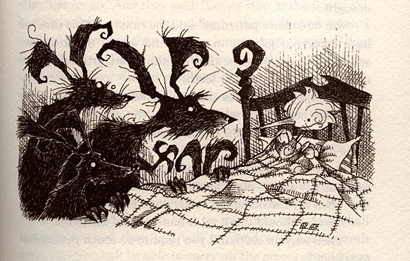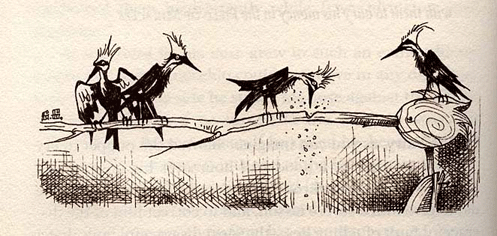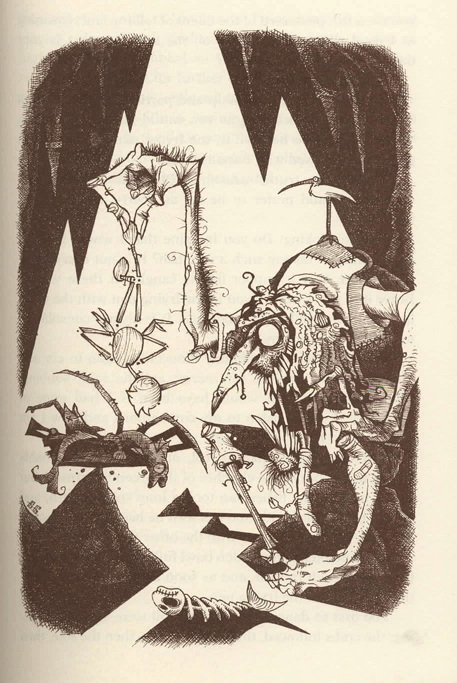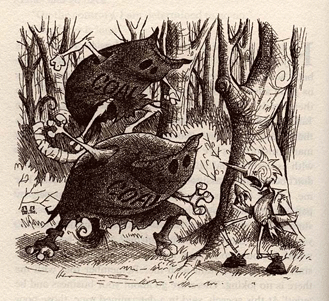



Collodi’s masterpiece the Adventures of Pinocchio are a direct product of the times in which the tale was written. Italy in the late 1800’s experienced turbulent times. This period saw the struggles of unifying a country whose history revolved around its occupation. These were dark times with a great deal of controversy existing between the aristocracy and the working class, a quintessential power struggle. Thus the dark side of Pinocchio was Collodi’s way of addressing these issues. Unfortunately few translations and adaptations of the story have remained true in this grim aspect, except for the artistic adaptation of Gris Grimly.
Disney’s adaptation, the most well known interpretation, targeted a younger audience through bright images of dancing boys and merry cats. Thus a great deal of the artistry focused on the lighter side of Collodi’s tale. There were darker elements portrayed in Disney’s version of Pinocchio through the character Mangia fuoco and the devilishly grinning carriage driver, but a great deal of Collodi’s magic and essence was lost as the text was ‘rewritten’ to fit the demands of Disney’s audience.
Gris Grimly on the other hand, used the ‘dark side of Pinocchio’ to inspire his illustrations. Grimly rarely used color in his sketches, a crucial technique used by Disney, and focused on the moral and morbid images hidden in the text. Grimly’s images include the scene where Pinocchio’s feet are burnt off by the fire and Pinocchio’s lynching at the old Oak tree, both images that bespoke the repercussions associated with not obeying his father. Grimly even went so far as to include an image that included a coffin and pallbearers to suggest Pinocchio’s death. Grimly focused on key elements of tragedy throughout the narrative to suggest the darker struggle of attaining morality.



